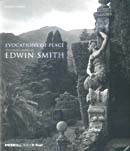Book reveiw: Evocations of Place: The Photography of Edwin Smith
Hugh Massingberd is captivated by the photographs and life of Edwin Smith, whose powerful images allow a glimpse of history and fragile landscapes


Evocations of Place: The Photography of Edwin Smith
Writing the words to accompany the pictures in coffee table books can be a thankless task. Some idea of the poor hack's lowly standing can be gleaned from the fact that the publisher's 'dummy' (designed to sell international co-editions) has the sample text set in Ancient Greek.
The great photographer Edwin Smith (1912?71) the subject of this sumptuous study witheringly remarked that he had 'never really been helped by meeting an author'.Yet, my proudest moment in Grub Street was writing the captions to some of Smith's luminescent works of art in a volume on European royal palaces.
As Sir John Betjeman observed of Smith's photographs: 'Though in monochrome, they are as full of the suggestion of colour as are those marvellous etchings of Norfolk which Cotman made.' Nowhere is Smith's debt to Cotman and other landscape artists better shown than in his ravishing image of St Mary's, Swinbrook, from across the Windrush. Indeed, Smith never cared for colour photography. 'Even in black and white', as Sir Cecil Beaton wrote, 'he is able to suggest the richness of the dark Christmas pudding panelling below the brandy butter stucco ceilings of English country houses, the delicate spirals of the wood carving at Chatsworth, Belton, or Petworth'.
In a perceptive preface to Smith's book Great Interiors (1967), Beaton pointed out: 'Though appreciative of the cool, calm, and beautifully controlled photographs beloved of Country Life, he has also a mastery over dramatising the composition; for making the significant detail loom large in the foreground.' Above all, as the architectural historian Sir John Summerson said, Smith 'has such a good eye'.
'The English Atget', as he was nicknamed, was born in humble circumstances in Camden Town in north London, and insisted that he was 'an architect by training, a painter by inclination and a photographer by necessity'. It has to be said that he does not come across as a particularly sympathetic figure. In describing the personalities of Smith and his second wife, Olive Cook (who bequeathed his photographic collection to the RIBA in 2002), Robert Elwall, photographs curator at the British Architectural Library, has to fall back on that dread phrase 'neither suffered fools gladly'.
During the Second World War, Smith dodged conscription, abandoned his first wife and small baby son, and drew cats hardly 'a good war'. Yet after the conflict, this essentially English artist certainly did his 'bit' for his country through pioneering conservation campaigns. As the esteemed author argues, Smith's photographs 'provide a unique insight into the cultural and social milieu of mid-20th-century Britain' and highlight 'the fragility of both our natural and our built heritage, together with the need for an architecture respectful of its environment'. And, of course, the pictures are beautiful.
Sign up for the Country Life Newsletter
Exquisite houses, the beauty of Nature, and how to get the most from your life, straight to your inbox.
Country Life is unlike any other magazine: the only glossy weekly on the newsstand and the only magazine that has been guest-edited by HRH The King not once, but twice. It is a celebration of modern rural life and all its diverse joys and pleasures — that was first published in Queen Victoria's Diamond Jubilee year. Our eclectic mixture of witty and informative content — from the most up-to-date property news and commentary and a coveted glimpse inside some of the UK's best houses and gardens, to gardening, the arts and interior design, written by experts in their field — still cannot be found in print or online, anywhere else.
-
 ‘It had the air of an ex-rental, and that’s putting it politely’: How an antique dealer transformed a run-down Georgian house in Chatham Dockyards
‘It had the air of an ex-rental, and that’s putting it politely’: How an antique dealer transformed a run-down Georgian house in Chatham DockyardsAn antique dealer with an eye for colour has rescued an 18th-century house from years of neglect with the help of the team at Mylands.
By Arabella Youens
-
 A home cinema, tasteful interiors and 65 acres of private parkland hidden in an unassuming lodge in Kent
A home cinema, tasteful interiors and 65 acres of private parkland hidden in an unassuming lodge in KentNorth Lodge near Tonbridge may seem relatively simple, but there is a lot more than what meets the eye.
By James Fisher